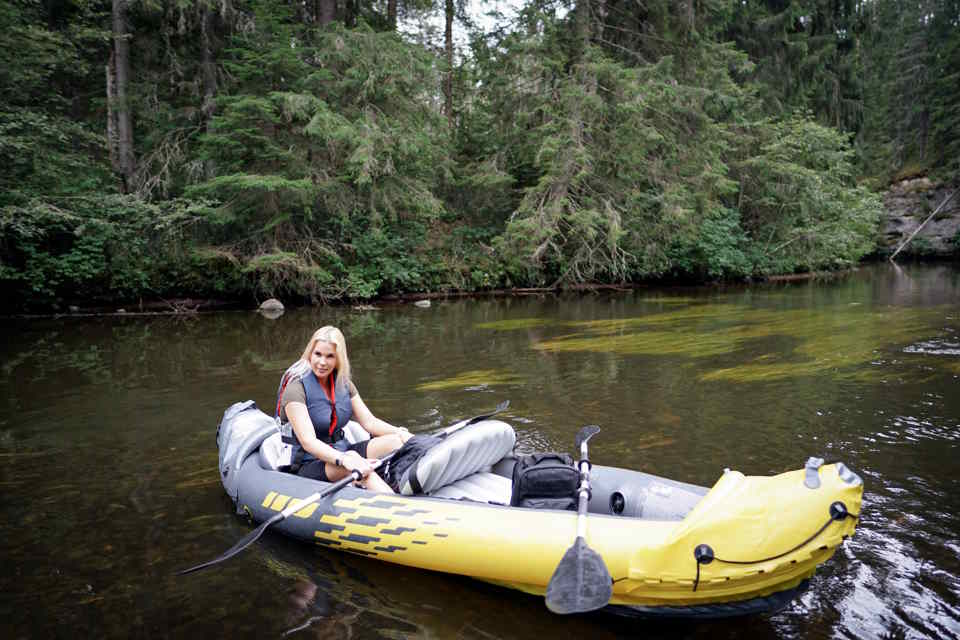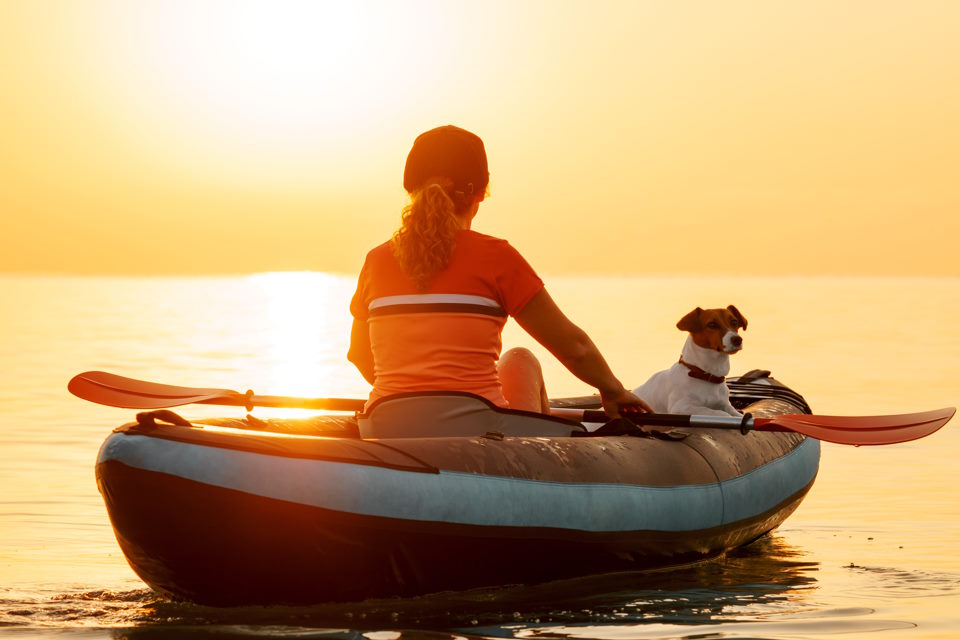Introduction
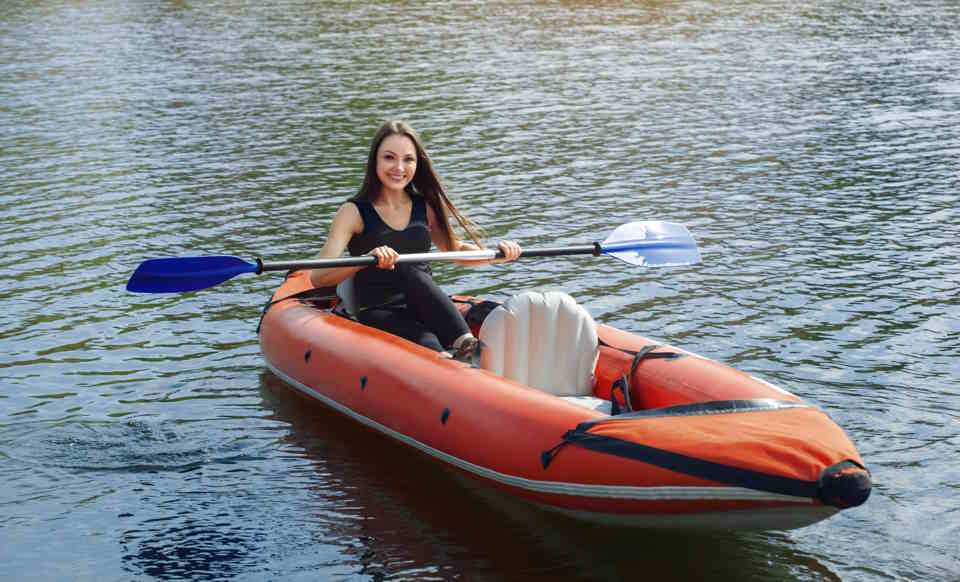
When it comes to kayaking, having the right gear can make or break your adventure. Not only will the proper equipment ensure that you have a safe and enjoyable time on the water, but it can also enhance your overall experience. We’ll explore why having the right gear is essential for a successful kayaking adventure.
First and foremost, choosing the right gear can greatly impact your safety on the water. Kayaking can be a dangerous sport if proper safety precautions are not taken, so it’s important to equip yourself with the necessary tools to stay safe. For example, wearing a personal flotation device, or PFD, can prevent drowning in the event of a capsize or other accident. Additionally, having navigation equipment such as maps, compasses, or GPS devices can help prevent getting lost, which can be especially important in areas with strong currents or tides.
Aside from safety considerations, having high-quality gear can enhance your overall kayaking experience. Think about it: paddling with a well-made paddle that is suited to your strength and size will not only make your paddling more efficient, but can also reduce fatigue and prevent injury. Kayaking in comfortable and protective clothing and footwear will allow you to enjoy your trip without worrying about sunburn, chafing, or blisters.
Lastly, having the right gear can also open up more opportunities for your kayaking adventure. For instance, investing in technology such as waterproof cameras or Bluetooth speakers can allow you to capture and share your experience with others, or simply make your trip more enjoyable by providing entertainment or tunes.
| Key Points to Remember: |
|---|
| 1) Proper equipment is crucial for a safe and enjoyable kayaking adventure. |
| 2) Safety gear such as PFDs and navigation equipment should not be overlooked. |
| 3) High-quality gear can enhance your kayaking experience and open up more opportunities. |
Kayaks
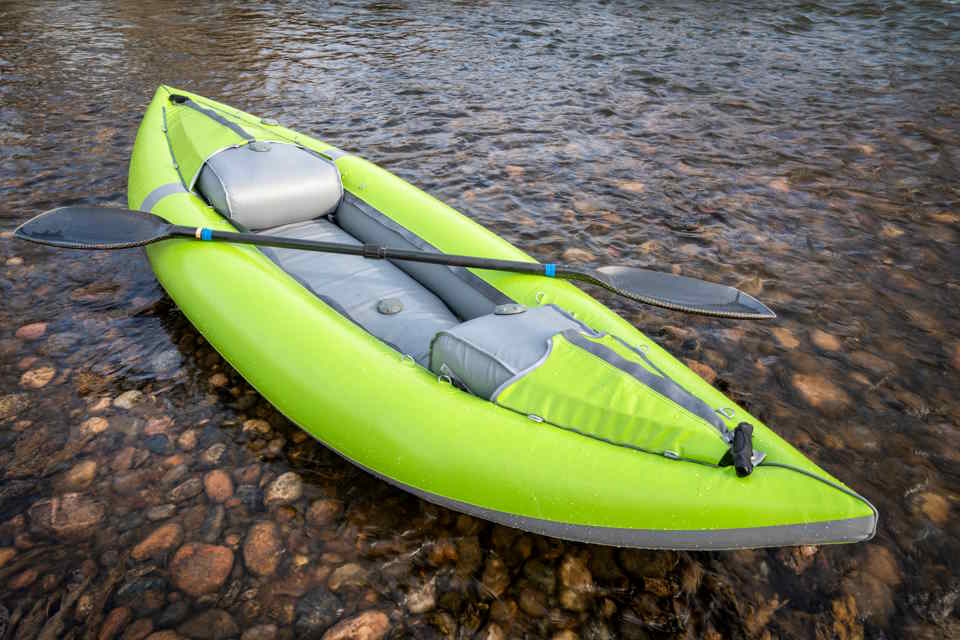
When it comes to kayaking, having the right gear can make or break your experience. One of the most important pieces of gear is the kayak itself. With so many options out there, it can be overwhelming to choose the right one for your needs. We will explore the different types of kayaks and factors to consider when selecting the right one.
Types of Kayaks
There are essentially two types of kayaks: sit-in kayaks and sit-on-top kayaks.
- Sit-in kayaks: These kayaks have a cockpit where the paddler sits inside the kayak. They provide more protection from the elements and are generally faster and more efficient than sit-on-top kayaks. They are a good choice for colder weather paddling or when paddling in rougher water.
- Sit-on-top kayaks: These kayaks have an open top with the paddler sitting on a molded seat above the water level. They are great for warm weather paddling, as they allow for easy entry and exit, and are generally more stable than sit-in kayaks. They are also a good choice for recreational paddling, fishing, or paddling with children.
Within these two types, there are also different styles of kayaks, such as recreational, touring, and whitewater kayaks. Recreational kayaks are wider and more stable, while touring kayaks are longer and faster, and whitewater kayaks are designed for navigating rapids and other rough water.
Factors to Consider
When choosing a kayak, there are several factors to consider:
- Intended use: What type of paddling do you plan to do? Recreational paddling, fishing, touring, or whitewater?
- Size: Kayaks come in different sizes, so consider your height, weight, and the size of the cockpit.
- Stability: How stable do you want your kayak to be? Are you a beginner or experienced paddler?
- Transportation: Do you have a way to transport your kayak? Consider the weight and size of the kayak when making your selection.
- Budget: Kayaks can range in price from a few hundred dollars to several thousand dollars, so decide how much you are willing to invest.
By taking these factors into consideration, you can narrow down your options and choose the kayak that is right for you. Remember, having the right kayak can greatly enhance your kayaking experience and make for a more enjoyable time on the water.
Paddles
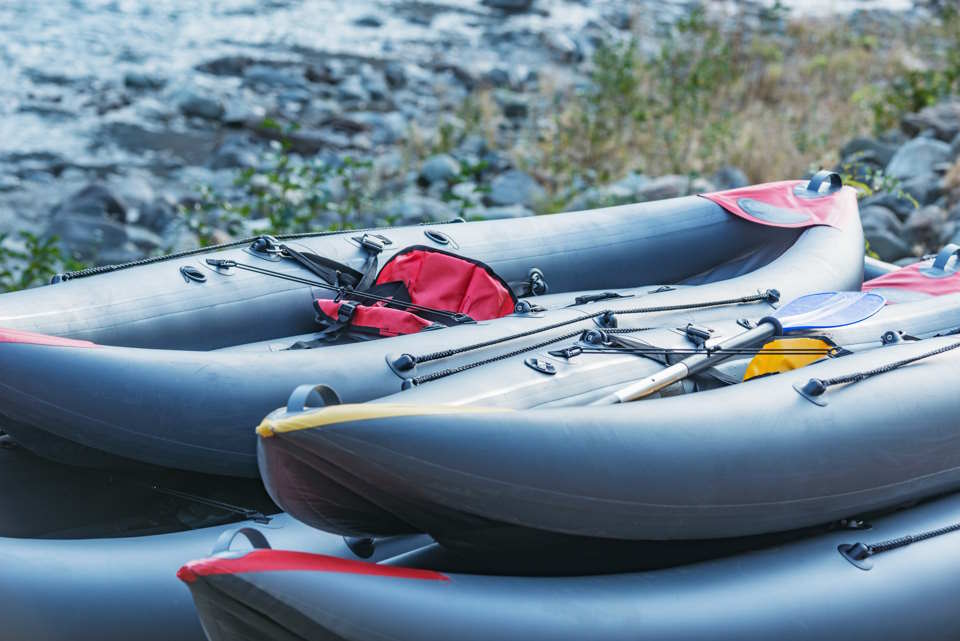
When it comes to kayaking, having the right gear is essential. One of the most important pieces of equipment to consider is the paddle. Your paddle can make or break your kayaking experience, so it’s important to choose the right one for your needs and preferences.
Types of Paddles
There are two main types of paddles: feathered and unfeathered. Feathered paddles have angled blades that are offset from each other, while the blades of unfeathered paddles are parallel. Feathered paddles are generally considered to be more efficient and easier to use in windy conditions, while unfeathered paddles are better for beginners or those who prefer a simpler design.
Paddle Length
The length of your paddle will depend on several factors, including your height, the width of your kayak, and your paddling style. Taller individuals will generally require longer paddles, while wider kayaks will require longer paddles as well. Additionally, those who prefer a low-angle paddling style will benefit from a longer paddle.
Paddle Material
When it comes to paddle material, there are three main options: aluminum, fiberglass, and carbon fiber. Aluminum paddles are the most affordable, but they are also the heaviest and least durable. Fiberglass paddles are mid-range in terms of price and weight, while carbon fiber paddles are the lightest and most expensive option. The material you choose will depend on your budget, the amount of time you plan to spend kayaking, and your personal preferences.

| Type of Paddle | Pros | Cons |
|---|---|---|
| Feathered | Efficient, great for windy conditions | Not ideal for beginners, can be more expensive |
| Unfeathered | Simpler design, better for beginners | Less efficient in windy conditions |
| Aluminum | Affordable | Heaviest and least durable option |
| Fiberglass | Mid-range in terms of price and weight | Less durable than carbon fiber |
| Carbon Fiber | Lightest and most durable option | Most expensive |
Personal Flotation Devices
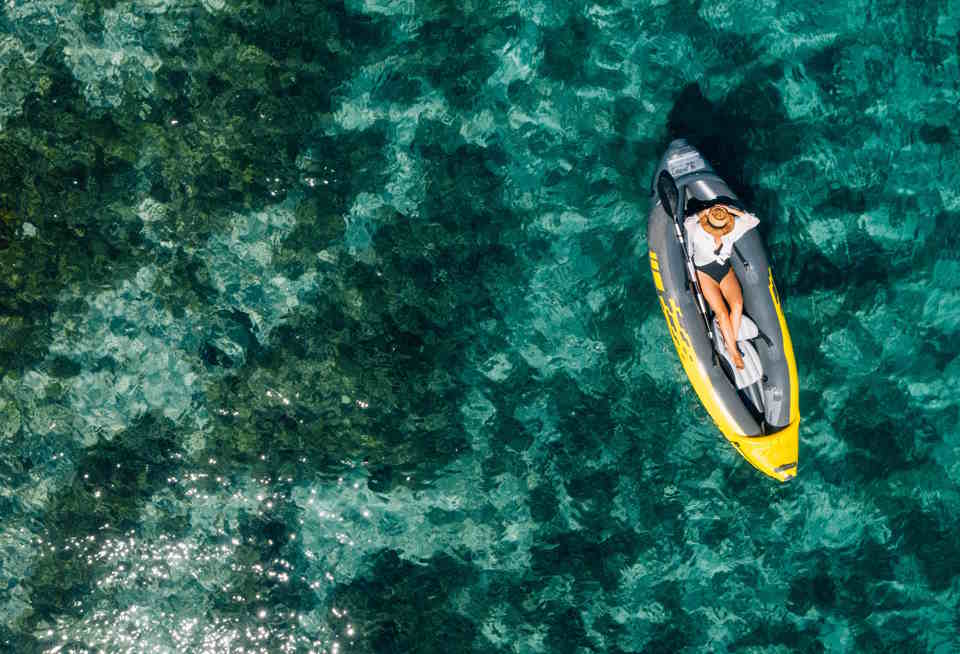
Personal flotation devices (PFDs) are essential for anyone spending time on or near the water. Whether you’re an avid boater, a fisherman, or simply enjoy swimming, wearing a PFD could mean the difference between life and death in an emergency situation. We’ll discuss the importance of wearing a PFD and how to choose the right one for your needs.
First and foremost, wearing a PFD can save your life. In the event of an unexpected fall overboard or capsizing, a PFD can help keep you afloat and prevent you from drowning, even if you’re unconscious. Accidents can happen to anyone, regardless of skill level or experience, and a PFD provides an extra layer of safety when you’re on the water.
But not all PFDs are created equal. When choosing a personal flotation device, it’s important to consider factors such as your activity, body type, and the water conditions you’ll be in. There are five main types of PFDs:
- Type I: Offshore Life Jacket – provides the most buoyancy and is best suited for rough or remote waters.
- Type II: Near-Shore Buoyancy Vest – provides slightly less buoyancy and is best for calmer waters near the shore.
- Type III: Flotation Aid – offers the most comfort and mobility, making it a great choice for activities like water skiing or kayaking.
- Type IV: Throwable Device – designed to be thrown to a person in the water, such as a life ring or buoy.
- Type V: Special Use Device – includes hybrid designs or inflatable vests meant for specific activities like paddle boarding or sailing.
When selecting a PFD, be sure to choose the type that is appropriate for your intended activity. It’s also important to consider the fit of your PFD. A properly fitting PFD should fit snugly but comfortably and not ride up above your shoulders or ears. Try on several different styles and sizes before making a final decision.
Navigation Equipment

When planning a kayaking adventure, one of the most important things to consider is navigation. Without proper navigation equipment, it can be easy to get lost or disoriented on the water. We’ll explore some of the essential tools for navigating the water, such as maps, compasses, and GPS devices.
One of the most tried and true forms of navigation is the trusty map. Maps can provide a lot of valuable information, such as water depths, landmarks, and potential hazards. When choosing a map for your kayaking adventure, be sure to pick one that is specifically designed for water navigation. These maps will often include information on tides, currents, and other important water-specific information.
Another essential tool for navigating the water is a compass. A compass can be especially useful when navigating in areas with limited visibility or during nighttime kayaking. When selecting a compass, make sure to choose one that is designed for marine use, as these compasses are built to withstand the rigors of being on the water.
Finally, a GPS device can be an invaluable tool for navigation. In addition to providing precise location information, many GPS devices also include navigational features such as waypoint marking and route planning. When selecting a GPS device for kayaking, look for one that is waterproof and durable enough to withstand exposure to water and the elements.
| Item | Considerations |
|---|---|
| Map | Choose one specifically designed for water navigation |
| Compass | Choose one designed for marine use |
| GPS Device | Choose one that is waterproof and durable |
Safety Gear
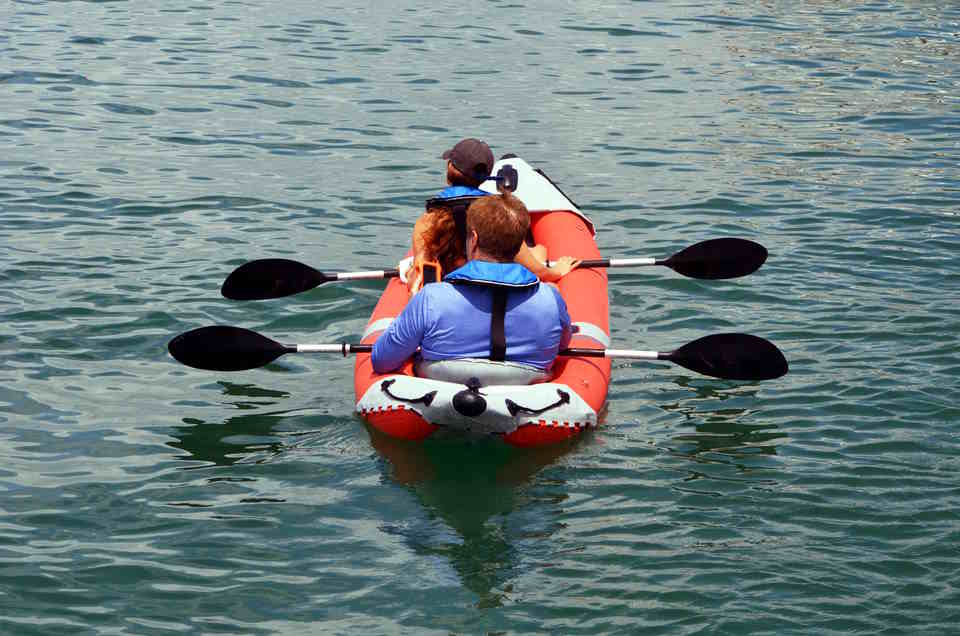
When it comes to kayaking, safety should always come first. While it’s important to have the right gear for an enjoyable experience, it’s even more crucial to be prepared for any emergencies that may occur while out on the water. This is where having the right safety gear comes in handy.
One of the most important items to have on hand while kayaking is a whistle. This small, lightweight device can be a lifesaver in an emergency situation. A whistle can be heard above the sound of wind and waves, and it’s an easy way to signal for help if needed.
Another must-have safety item is a first aid kit. Minor injuries can happen while kayaking, from scrapes and bruises to cuts and blisters. A basic first aid kit should include items such as bandages, antiseptic wipes, gauze, and medical tape. It’s important to make sure your first aid kit is easily accessible in case of an emergency.
Signaling devices, such as flares and mirrors, can also be useful in certain situations. For example, if you become lost or stranded, a signal mirror can help you attract attention from rescue teams or other boaters. Flares can also be used for signaling, as well as for lighting up the area around you at night.
Other items that can be helpful for staying safe while kayaking include a headlamp or flashlight, sunscreen, insect repellent, and a map or GPS device. It’s always a good idea to plan ahead and make sure you have everything you need before you hit the water.
Clothing and Footwear
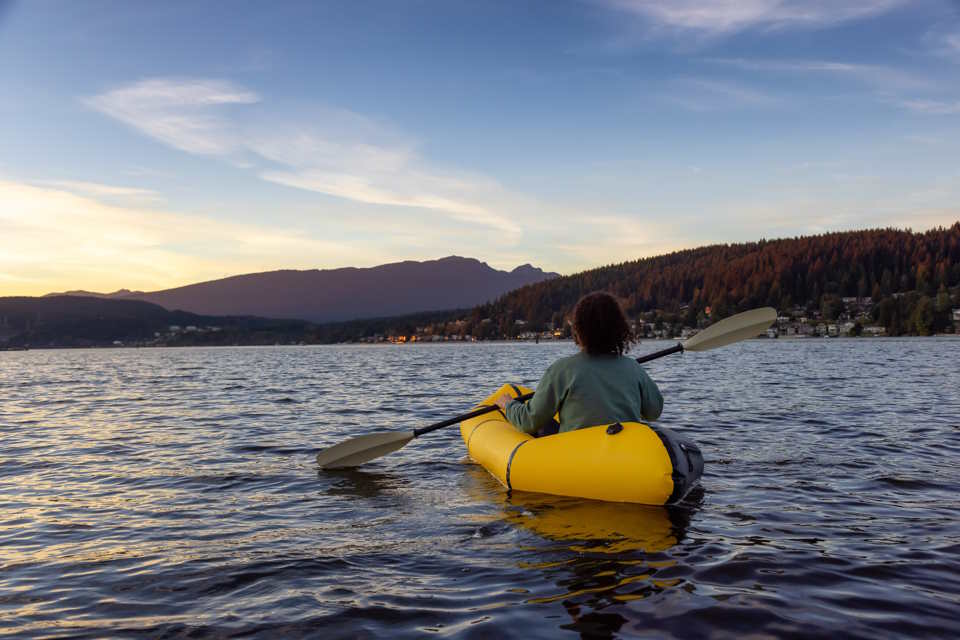
The importance of clothing and footwear while kayaking cannot be overstated. It is essential to stay comfortable and safe while navigating the water, and the right gear can make all the difference.
First and foremost, it is important to dress appropriately for the weather conditions. If it is a sunny day, wearing lightweight and breathable clothing is ideal to stay cool and avoid overheating. On the other hand, if it is a chilly day, then it is important to wear layers to stay warm. A good rule of thumb is to dress as if you are going on a hike, with waterproof jackets and pants that can protect you from rain and wind.
- Wear quick-drying clothes, as you will most likely get wet even if you don’t fall into the water.
- Wear a hat or a visor to protect your face from the sun.
- Choose shoes that have good traction, are comfortable, and can get wet. Water shoes or sandals are ideal for kayaking.
It is important to avoid wearing cotton clothing, as it takes a long time to dry and can make you feel cold and uncomfortable. Instead, opt for synthetic or wool fabrics that dry quickly and keep you warm even when wet.
Another crucial aspect of kayaking clothing is wearing a personal flotation device (PFD). A PFD is a life-saving device that can keep you afloat in case you fall into the water. It is important to make sure that your PFD fits properly and is comfortable to wear for long periods.
While having the right clothing and footwear is important, it is also crucial to be prepared for the unexpected. Always have a change of clothes and a towel in a dry bag, in case you get wet. In addition, bring sunscreen and sunglasses to protect your skin and eyes from the sun.
Technology
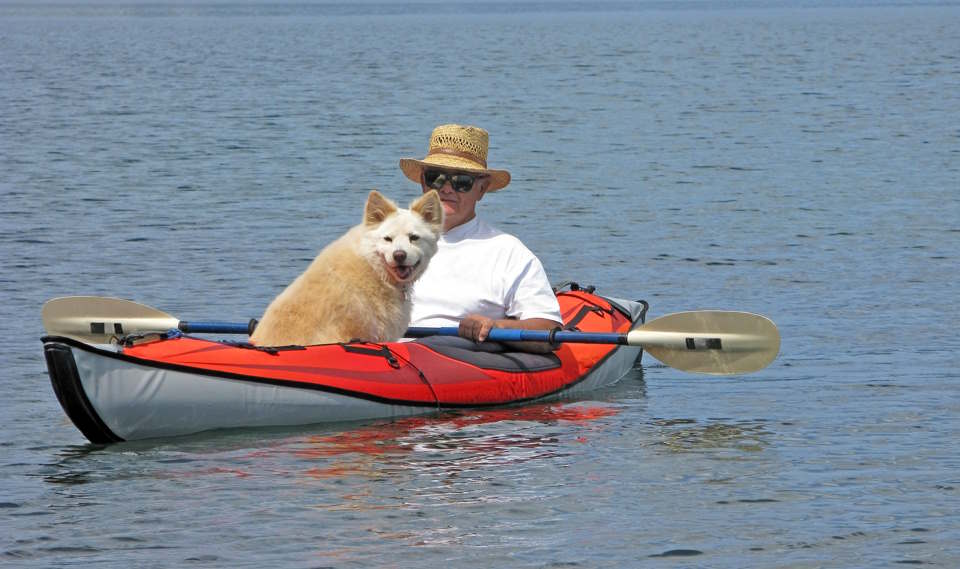
Exploring the waters with a kayak is an exhilarating experience that offers an excellent opportunity to explore the beauty of nature. As such, having the ideal tech gadgets for your kayaking adventure can provide an extra level of fun, convenience, and safety.
One popular tech gadget that kayakers love is the waterproof camera. With this device, kayakers can capture stunning photos and videos while cruising on the water safely. Some of the popular waterproof cameras to consider include the GoPro HERO 9 or the Olympus Tough TG-6. These gadgets come with several features such as image stabilization, waterproofing, and high-quality lenses. You can attach them to your kayaking gear or use their mounting accessories to capture unique angles as you move on the water.
Another essential gadget to consider when going for a kayaking adventure is a waterproof Bluetooth speaker. With a speaker, you can listen to your favorite music or even answer phone calls without worrying about your phone getting wet. Some popular options are the JBL Flip 5, Bose SoundLink Micro, or UE Wonderboom 2. These waterproof speakers come packed with long battery life, superior sound quality, and a waterproof design, making them an ideal companion for any kayaking adventure.
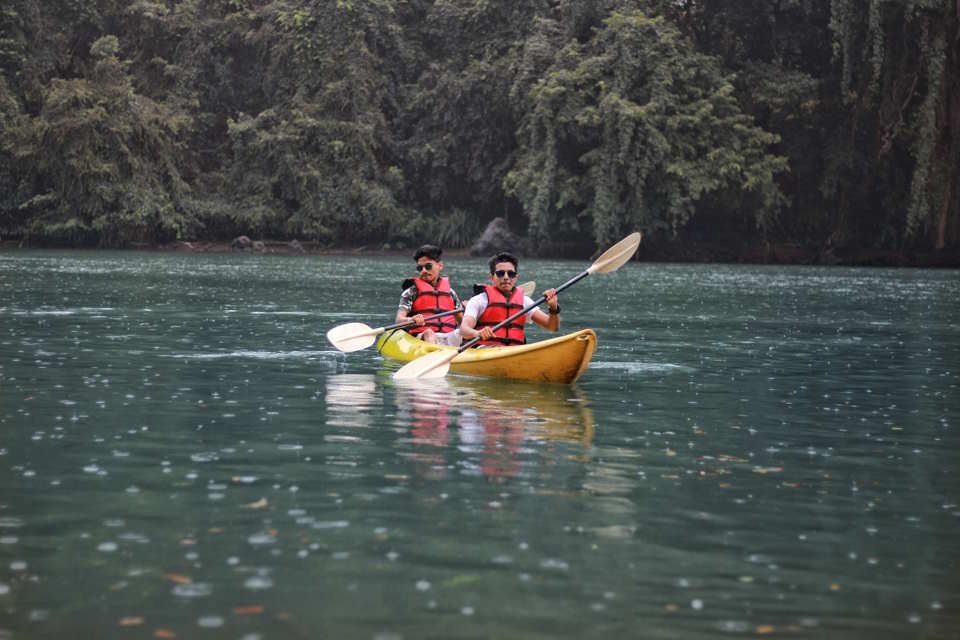
| Product Name | Features | Price |
|---|---|---|
| GoPro HERO 9 | 5K video, 20MP photos, HyperSmooth 3.0 stabilization, touch screen, waterproof | $399.99 |
| JBL Flip 5 | Waterproof, up to 12 hours of playtime, clear sound, durable materials | $119.95 |
| Olympus Tough TG-6 | 12MP sensor, 4K video, waterproof, shockproof, crushproof, FREEZEPROOF, and dustproof design | $419.99 |
| Bose SoundLink Micro | Waterproof, up to 6 hours of battery life, crystal clear sound, compact size | $99.99 |
So, when planning for your next kayaking adventure, don’t forget to carry along with you some of these useful tech gadgets. With a waterproof camera, you can capture some stunning moments, while a Bluetooth speaker adds a touch of fun and entertainment to your ride. Besides, these gadgets are durable, so with proper maintenance, they can serve you for many kayaking expeditions to come.
Maintenance and Repair

Many kayakers invest in top-of-the-line gear to ensure a safe and enjoyable experience out on the water. However, even the best gear is subject to wear and tear over time. Routine maintenance and repair can extend the life of your equipment and prevent unwanted malfunctions while paddling. Here are some important tips to keep your kayaking gear in top condition:
- Inspect your gear regularly: Before heading out on the water, take a few minutes to inspect your kayak and gear. Look for obvious signs of damage or wear, such as cracks in the hull or frayed lines. It’s also a good idea to inspect your paddle for any chips or cracks in the blades.
- Keep your gear clean: Saltwater, sand, and dirt can all take a toll on your gear. After each use, rinse your kayak, paddle, and other equipment thoroughly with freshwater. Use a mild soap and a sponge to clean any dirt or grime off your gear, and make sure everything is completely dry before storing.
- Store your gear properly: When not in use, store your kayak and gear in a dry, cool spot away from direct sunlight. Hanging your kayak from straps or a rack will help protect it from damage while also keeping it off the ground.
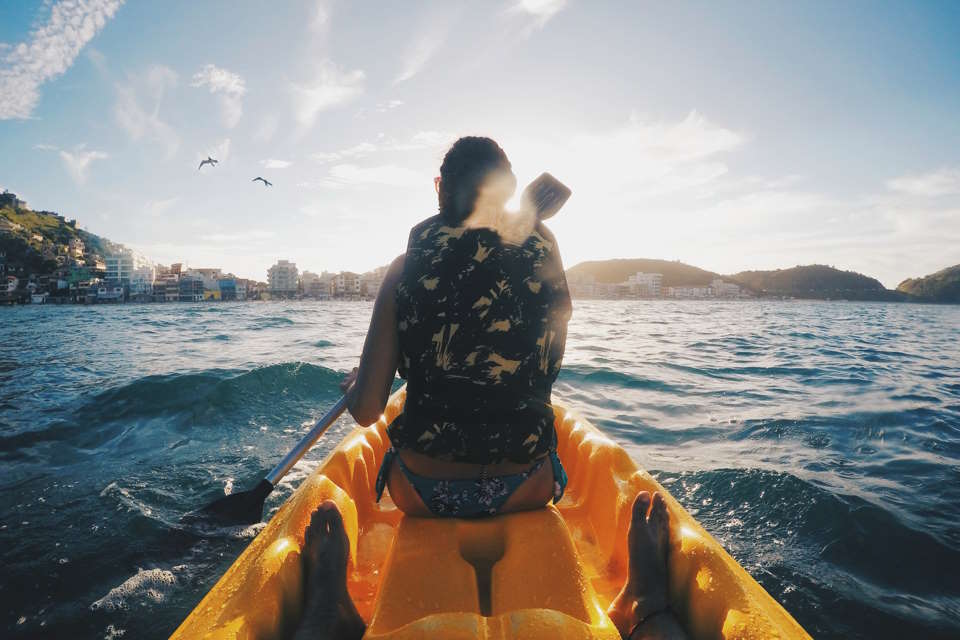
In addition to routine maintenance, sometimes gear repairs are unavoidable. Here are some common repairs you may need to make:
| Issue | Repair |
|---|---|
| Cracks in the kayak hull | Apply a plastic welding solution or use a patch kit to repair the crack. |
| Broken or damaged paddle | Depending on the severity of the damage, you may need to replace the entire paddle or just the damaged component. You can also repair minor cracks or chips in the blade using a plastic welding solution. |
| Worn-out or damaged PFD | Replace the PFD with a new one that meets your needs and preferences. |
It’s important to note that while DIY repairs may be possible for minor damage, more extensive repairs may require professional assistance. If you’re unsure how to fix an issue, consult with a kayaking gear expert or experienced repair technician.
By taking the time to maintain and repair your gear, you’ll ensure that it lasts longer and functions properly for all of your kayaking adventures.
Conclusion
If you’re planning on hitting the water this summer for a kayaking adventure, it’s important to have the right gear in order to have a safe and successful trip. From kayaks and paddles to personal flotation devices and navigation equipment, there are several items to consider when selecting the best gear for your needs.
One key factor to keep in mind when choosing your gear is the type of kayaking you’ll be doing. Are you planning a leisurely trip down a calm river or an adrenaline-packed ride through rapids? The answer to this question will determine the type of kayak, paddle, and other gear you’ll need for your adventure.
When it comes to selecting the right kayak, factors to consider include the type of water you’ll be paddling on, the length of your trip, and your skill level. There are several types of kayaks available, including sit-on-top kayaks, touring kayaks, and whitewater kayaks. Each type has its own strengths and weaknesses, so it’s important to choose the one that best fits your needs.
- Types of Kayaks: Sit-on-top kayaks, touring kayaks, and whitewater kayaks.
- Factors to Consider When Selecting a Kayak: The type of water you’ll be paddling on, the length of your trip, and your skill level.

Choosing the right paddle is also important for a successful kayaking trip. Factors to consider when selecting a paddle include the length of the paddle, the material it’s made of, and the shape of the blade. An improperly sized paddle can cause fatigue and discomfort, so it’s important to choose one that fits your body and paddling style.
- How to Choose the Right Paddle: Consider the length, material, and shape of the blade.
- Importance of Wearing a PFD: To stay safe and afloat in case of an accident or capsizing.
- Essential Navigation Equipment: Maps, compasses, and GPS devices to stay on course and avoid getting lost.
- Important Safety Gear: Whistles, first aid kits, and signaling devices in case of emergency.
- Clothing and Footwear: Depending on the conditions, wearing the right gear can keep you comfortable and safe on the water.
- Useful Technology: Waterproof cameras and Bluetooth speakers can enhance your kayaking experience.
- Maintenance and Repair: Tips for maintaining and repairing your kayaking gear to prolong its lifespan.
Regardless of the type of kayaking adventure you’re planning, it’s important to have the right gear to ensure a safe and enjoyable trip. So, whether you’re an experienced kayaker or a beginner, take the time to research and choose the best gear for your needs. Happy kayaking!

